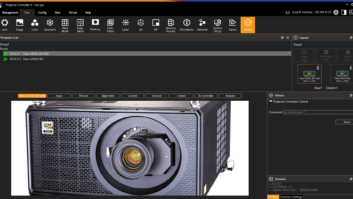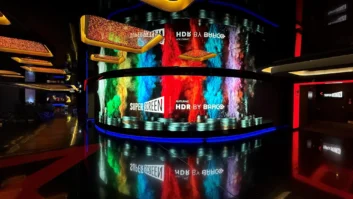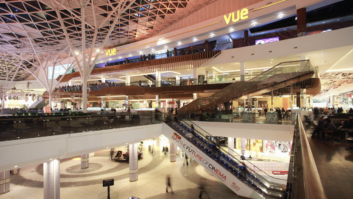 The projection market rebounded well earlier this year, as projects that were put on hold were commissioned and a lot of projects in the background were approved. But in a year where anything and everything can happen on a macro-economic scale, it is important the industry is aware of the challenges the sector faces while taking encouragement from this return to ‘normal’ activity.
The projection market rebounded well earlier this year, as projects that were put on hold were commissioned and a lot of projects in the background were approved. But in a year where anything and everything can happen on a macro-economic scale, it is important the industry is aware of the challenges the sector faces while taking encouragement from this return to ‘normal’ activity.
We have seen strong demand for our projection solutions amid the ongoing market uncertainty. The market in eastern Europe has slowed dramatically and the knock-on effects of the war in Ukraine are well known to everyone, with rising inflation and costs making businesses look at their capital investments more closely. This means that the demand is still strong but certain vertical markets have seen the actual quote-to-order time increase quite dramatically as end users delay their orders to integrators.
On the flip side of this, of course, is the global shortage of microchips which has affected every manufacturer. We saw that this affected some buying decisions, especially in mission-critical applications or large installs such as visitor attractions, where orders were placed and delivery taken well before the installation date simply to secure kit in an unpredictable market.
TECH UPDATE
From a technology standpoint, projection is a known quantity, and there has always been a race for brighter and brighter projectors – but this has always led to bigger and noisier projectors, and this is something that is getting less and less acceptable. We are seeing a demand for smaller and quieter projectors that don’t need additional hush-boxes or complex rigging systems. This is especially the case in environments such as auditoriums and theatres, where noisy projectors are an unacceptable distraction.
Size is also important as we see a trend in the post-Covid world away from the big enterprise conference rooms and their associated big projectors. There is more emphasis on smaller collaboration rooms and break-out areas that need to be flexible but are still too large for flat panels. For example, large-scale video conferencing still requires big screens to help enable shared experiences, and projectors used in these environments need to be small, with flexible lens ranges, to allow for quick reconfigurations.
IMMERSIVE EXPERIENCES
There is also still a strong demand for projection to create immersive experiences, be that large-scale projection-mapping visitor attractions, traditional exhibits in museums, or the next generation of dark-ride content and interactivity. This brings with it new challenges for manufacturers, such as the increasing need for specialised lenses or ultra-high frame rates. It is no longer just about brightness and resolution, though these are still important aspects, especially where direct-view LED and flat panels are increasing their market share.
Projection continues to provide unique solutions to problems that no other display technology can offer, and we’re optimistic about the future of this vibrant, dynamic corner of the pro AV world.
.







